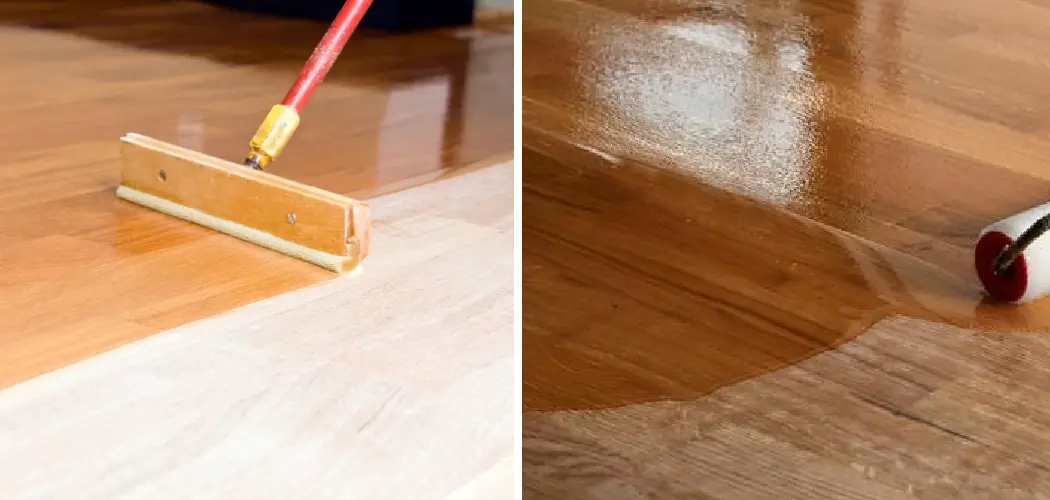Water-based polyurethane is a popular choice for floor finishing among homeowners and DIY enthusiasts. It is easy to apply and provides excellent durability and protection for floors. Unlike oil-based polyurethane, water-based polyurethane has a low odor, dries faster, and cleans up easily with water.
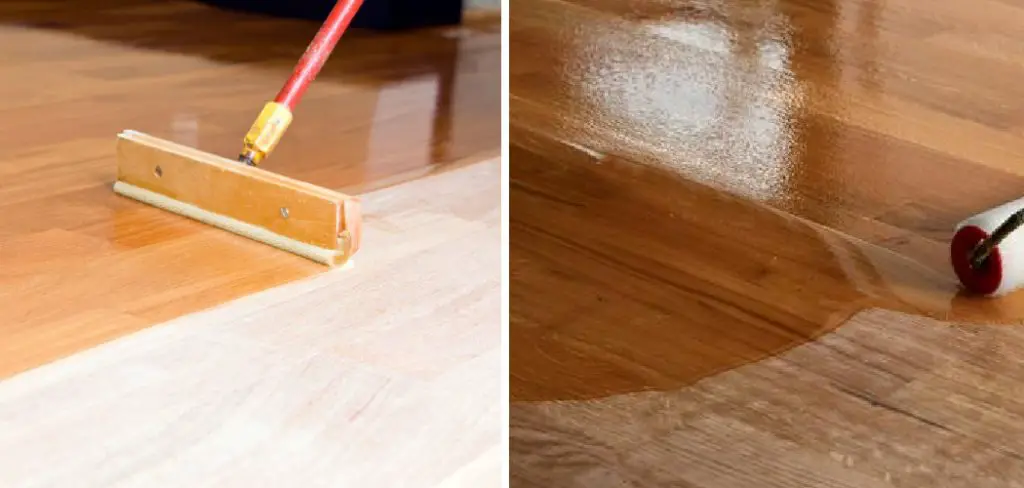
The main advantage of using water-based polyurethane is its environmental friendliness. As the name suggests, it is made primarily of water and contains little to no volatile organic compounds (VOCs). This makes it a safer choice for both your health and the environment. In this blog post, You will learn how to apply water based polyurethane to floors.
Step-by-step Instructions for How to Apply Water Based Polyurethane to Floors
Step 1: Inspect and Repair the Floor
Before applying water-based polyurethane, it is important to inspect your floors for any damages or imperfections. If nail holes or gashes exist, you must fill them with wood filler and sand down the area until smooth.
Step 2: Clean the Floor Thoroughly
Remove all dust, dirt, and debris from your floors by sweeping and vacuuming. You can also use a mop with warm water and mild detergent to remove any stubborn stains or residue for a deeper clean. Use a floor sander to sand down your floors, making sure to go toward the wood grain. This will help remove any scratches or imperfections and create a smooth surface for the polyurethane to adhere to.
Step 3: Vacuum and Wipe Down the Floor
After sanding, removing all dust and debris from the floors is important. Use a vacuum cleaner with a soft brush attachment to carefully remove any remaining dust. Then, use a damp cloth to wipe down the surface of the floors and ensure they are spotless.
There are a few different options for applying water-based polyurethane to floors. You can use a brush, roller, or lambswool applicator. Each has its advantages, and you should choose the one that works best for you.
Step 4: Apply the First Coat
Pour the water-based polyurethane into a paint tray and apply the first coat with your chosen applicator. Make sure to apply an even layer, going toward the wood grain. Allow the polyurethane to dry completely before moving on to the next step.
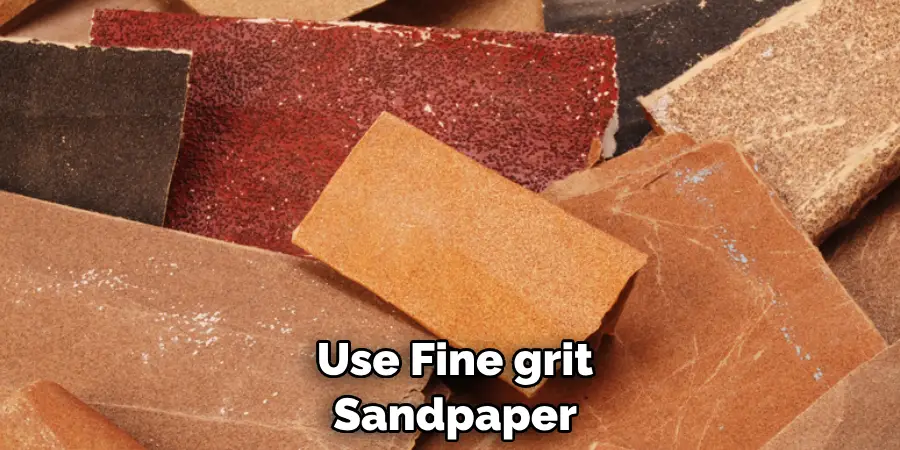
Once the first coat is completely dry, use fine-grit sandpaper (220 or higher) to sand the surface lightly. This will help smooth out any imperfections and allow for better adhesion of the next coat.
Step 5: Apply the Second and Third Coat
Repeat steps 6 and 7 to apply a total of three coats of water-based polyurethane. Make sure to sand between each coat for a smooth finish. After the final coat is applied, allow for at least 24 hours of drying time before walking on or placing furniture on the floors. This will ensure that the polyurethane has fully cured and will provide a durable finish.
Step 6: Maintain Your Floors
Avoid using harsh chemicals or abrasives when cleaning to keep your newly finished floors looking great. Instead, use a damp mop or cloth with mild detergent. It is also recommended to use furniture pads on the legs of any furniture to prevent scratches and damage to the polyurethane finish.
With these step-by-step instructions, you can easily apply water-based polyurethane to your floors and achieve a beautiful, durable finish.
Tips for How to Apply Water Based Polyurethane to Floors

- Before applying water-based polyurethane to your floors, ensure you have proper protective gear such as gloves, goggles, and a face mask. This will help prevent any injuries or accidents while working with the chemicals.
- Water-based polyurethane can produce strong fumes, which can be harmful if inhaled in large quantities. Work in a well-ventilated area or use a respiratory mask to avoid any health hazards.
- Keep children and pets away from the area where you will apply water-based polyurethane. The chemicals used can harm them if ingested or come into contact with wet surfaces.
- If you have any existing respiratory or skin conditions, avoiding applying water-based polyurethane yourself is best. Instead, consider hiring a professional to do the job for you.
- Always follow the manufacturer’s instructions carefully before starting the application process. Different products may have different application methods and drying times.
- Take breaks in between coats of water-based polyurethane to allow for proper ventilation and drying time. This will ensure a smoother and more effective application.
- Properly dispose of any leftover chemicals or used tools after completing the job. Do not pour them down the drain, as they can harm the environment.
What Are the Benefits of Using Water-Based Polyurethane for Floors?
Water-based polyurethane is a protective coating used to seal and protect floors. It comprises water, resins, and plasticizers, giving it durability and flexibility. One of the main benefits of using water-based polyurethane for floors is its low levels of volatile organic compounds (VOCs). This means it does not emit as many harmful fumes as other polyurethane types.
Water-based polyurethane dries faster than oil-based polyurethane, allowing for quicker application and less downtime. It also has a clear finish that will not alter the color or appearance of the floor. Unlike oil-based polyurethane, which can turn yellow over time, water-based polyurethane has better color retention and will not yellow or fade as quickly.
It also resists scratches and scuffs, making it a more durable choice for high-traffic areas. Lastly, water-based polyurethane is easier to clean up with just soap and water than oil-based polyurethane, which requires harsh cleaning chemicals.
How Often Should Water-Based Polyurethane Be Reapplied on Floors?
Water based polyurethane is a popular choice for finishing hardwood floors due to its durability, ease of application, and low odor. In this section, we will discuss the factors that can affect the frequency of reapplication and provide some tips for maintaining your floors.
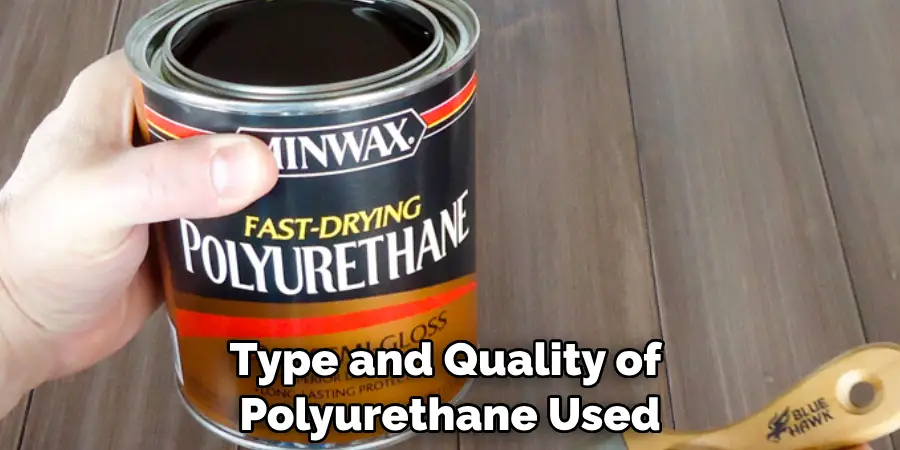
First and foremost, it is important to note that the frequency of reapplication depends on several factors, including the type and quality of polyurethane used, the amount of foot traffic on your floors, and the overall condition of your floors. Generally speaking, water-based polyurethane should be reapplied every two to three years.
However, this can vary depending on the factors mentioned above. For example, if you have high-traffic areas in your home or pets that may scratch the floors, you may need to reapply more frequently.
Are There Any Special Cleaning Instructions for Maintaining Floors With a Water-Based Polyurethane Finish?
While water-based polyurethane finishes are known for being durable and long-lasting, they still require proper cleaning and maintenance to ensure their longevity. Here are some special cleaning instructions to keep in mind when maintaining floors with a water-based polyurethane finish:
1 . Avoid Using Harsh Chemicals or Abrasive Cleaners
Water based polyurethane finishes can be damaged by strong chemicals and abrasive cleaners. These can cause the finish to become dull or even peel off. Stick to mild, non-abrasive cleaning products and avoid using any harsh chemicals on your floors.
2 . Use a Soft Cloth or Mop
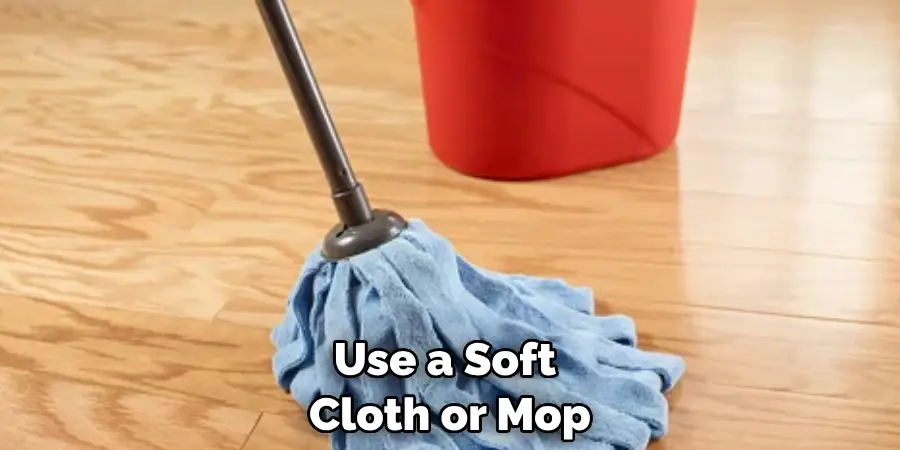
When cleaning your floors, use a soft cloth or mop to avoid scratching the surface of the finish. Microfiber cloths are a great option for gentle yet effective cleaning. Avoid using rough materials like steel wool or abrasive scrubbers.
3 . Wipe Up Spills Immediately
Water-based polyurethane finishes are not completely waterproof, so it’s important to immediately wipe up any spills or liquids. This will prevent the finish from damaging and help avoid any potential staining.
4. Use a PH-neutral Cleaner
When choosing a cleaner for your floors, make sure it is pH-neutral. This means it has a balanced pH and is not too acidic or alkaline. Using a cleaner with extreme pH levels can damage the finish.
5. Avoid Excessive Water
While water-based polyurethane finishes are more water-resistant than oil-based ones, they shouldn’t be exposed to excessive water. Ensure to wring out your mop or cloth well before using it on the floor, and avoid leaving standing water on the surface for too long.
By following these special cleaning instructions, you can help maintain the beauty and durability of your floors with a water-based polyurethane finish. Regular cleaning and maintenance will also help prolong the life of your floors and prevent any damage to the finish.
Conclusion
In conclusion, water-based polyurethane has several advantages when applied on floors. It is easy to apply, dries quickly, and provides a durable finish. However, as with any product, there are also some disadvantages. One of the main disadvantages of using water-based polyurethane on floors is that it can be quite expensive compared to other finishes. This can be a deterrent for those on a tight budget, as there may be other options than this.
Another disadvantage is that water-based polyurethane has a shorter lifespan than oil-based polyurethane. This means that you may need to reapply the finish more frequently, which can add time and cost. Reading this post has helped you learn how to apply water based polyurethane to floors. Make sure the safety precautions are carried out in the order listed.

